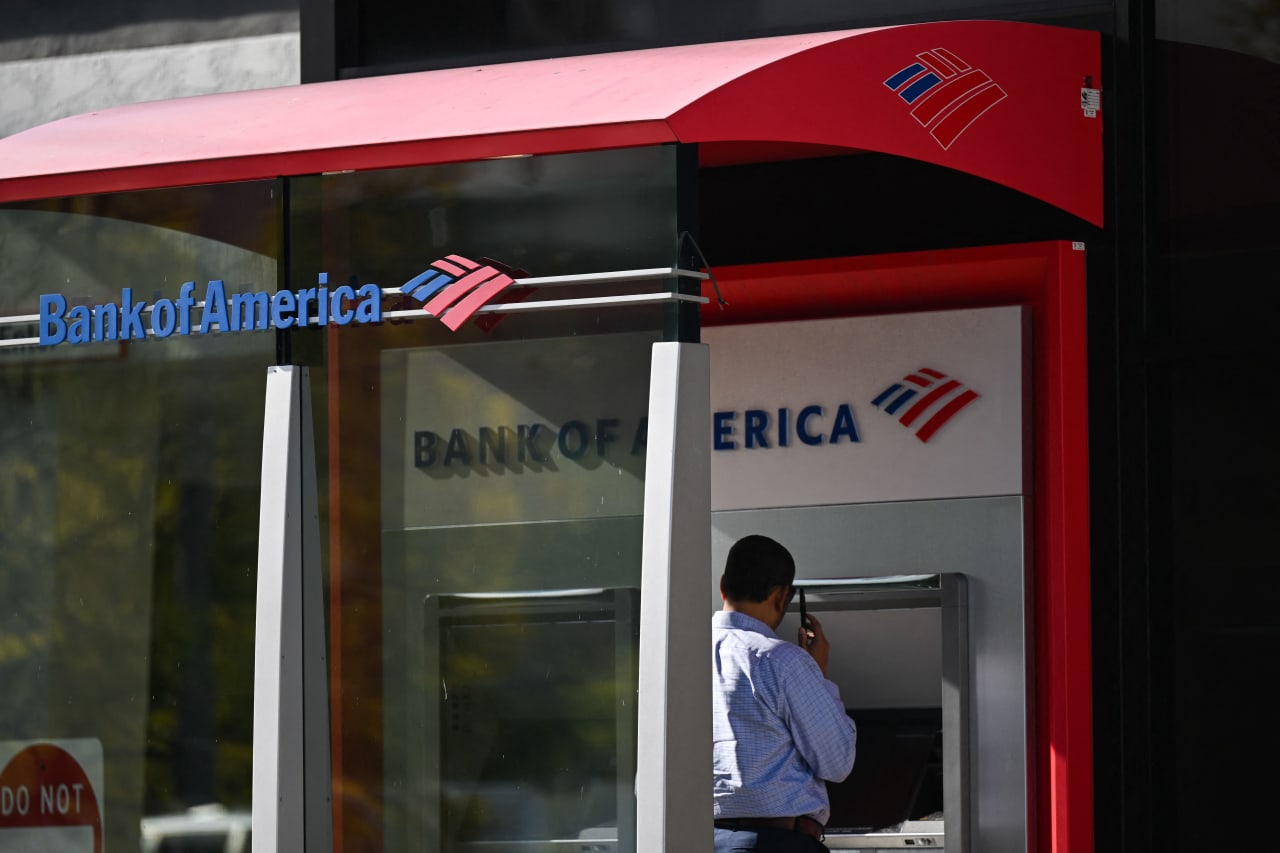The Clean Energy Transition Is Creating Opportunities to Invest in Infrastructure
A year after the Inflation Reduction Act (IRA) was signed into law it’s a good reminder that there’s opportunity in infrastructure investments in the U.S., particularly green technology or those that profit from the transition from fossil fuels to renewable-energy sources.
“This is a really good time to be investing in the sector,” says Michael McGown, head of North American infrastructure private markets at Mercer Alternatives. “There is a real need to transition away from carbon, and the fact that the U.S. government has gotten behind this makes it a win.”
Yes, there is some political pushback against the law—and there are still those who want to rely on fossil fuels and other traditional forms of energy production. But many experts point to the IRA’s transformative potential, and its impact on energy-transition spending in particular, as a good opportunity for savvy investors.
“I don’t think in my career I’ve ever seen a law have a greater impact on economic development in this country,” Gregory Wetstone, chief executive officer of the American Council on Renewable Energy, a clean energy lobbying group, said in July.
Wall Street agrees. Calling themselves “positive” on greentech opportunities, analysts at UBS wrote in July that they forecast US$40 trillion to US$50 trillion of global energy-transition investments in the years 2021–30, in support of net-zero efforts.
“We also expect to see technological developments and a broad-based move to global electrified vehicles (i.e., battery-electric vehicles and plug-in hybrid electric vehicles),” the UBS team wrote in a note. “Such sales may account for a 30% share of the global market by 2025 and a 60%–70% share by 2030, in our view.”
Within the category of energy transition, there are some infrastructure themes that may appeal more than others, either because of their promise of innovation or potential monetary returns.
Mercer’s McGowan points to investments in carbon reduction and abatement, those dedicated to decommissioning old power plants to replace them with renewable or hybrid technologies, and investing in ammonia, which is often used to transport clean hydrogen.
More cutting-edge technologies are likely to offer investors better total returns, says Steven Novakovic, director of curriculum for the Chartered Alternative Investment Analyst Association. In contrast, the more mature, stable, user-fee oriented investments are less return-oriented, but better bets for income investors.
“Generating, moving, or storing energy tends to be income-oriented,” Novakovic says.
Importantly, even though energy infrastructure may be capital-intensive, higher and rising interest rates aren’t likely to be a negative for the sector.
“High barriers to entry and the monopolistic positioning of many infrastructure assets tend to make them less sensitive to the economic cycle,” the UBS analysts said. “In addition, they can help stabilise income generation in a multi-asset class portfolio, particularly when accounting for long-term inflation. Since 2003, infrastructure has typically performed best when global inflation has been high (based on Cambridge Associates Infrastructure Index data).”
With interest rates higher across the board, some investors may simply choose to stick with safer fixed-income assets, Novakovic says. But, he says, “Ultimately infrastructure still has a diversifying effect for portfolios.”
Where to Invest
What are the best ways for investors to access the sector? Qualified investors, or those with at least a few million to spend, can put money directly into private-market plays, such as private-equity funds or even venture-capital funds, which are likely to pay the most in total returns.
There are, of course, typical concerns with private-market strategies, the UBS team said: “illiquidity, longer lockup periods, leverage, concentration risks, and limited control and transparency of underlying holdings. While risks can’t be fully eliminated, it is possible to mitigate them through strong due diligence and strict manager selection.”
They add a shout-out for global industrial stocks, writing that the “sector’s composition has become increasingly diversified and no longer behaves like a traditional cyclical play, in our view.”
In a July note to clients, J.P. Morgan Private Bank analysts wrote about the opportunities in the semiconductor industry driven by the IRA in addition to last year’s CHIPS and Science Act. Semiconductors, for instance, can be used in the process of decarbonisation, particularly for powering “smart” electric grids and other forms of infrastructure
“The semiconductor industry is poised for growth as chips penetrate the clean energy value chain: in photovoltaic solar cells, wind turbines, EVs, batteries, charging stations, and power grids,” the note said.
CHIPS alone allocates more than US$50 billion to subsidise domestic manufacturing of advanced semiconductors. “These government incentives, combined with the wide variety of uses for semiconductors, have pushed companies to ramp up supply,” J.P. Morgan said.
For investors who want to access a basket of energy-transition stocks, several exchange-traded funds may fit the bill. The Global X Lithium & Battery Tech ETF (ticker: LIT) “invests in the full lithium cycle, from mining and refining the metal, through battery production,” according to fund documents, while the Sprott Energy Transition Materials ETF (SETM) says it, “provides pure-play access to a range of critical minerals necessary for the global clean-energy transition.”
And for those who prefer bonds, or just want a more tax-efficient strategy, many municipalities are also issuing debt to fund cleaner energy. In June, the California Community Choice Financing Authority sold nearly US$1 billion in bonds to finance the acquisition of clean energy—including geothermal and solar-plus-storage—by the Clean Power Alliance of Southern California. The projects could affect as many as 3 million residents.
 Copyright 2020, Dow Jones & Company, Inc. All Rights Reserved Worldwide. LEARN MORE
Copyright 2020, Dow Jones & Company, Inc. All Rights Reserved Worldwide. LEARN MORE
This stylish family home combines a classic palette and finishes with a flexible floorplan
Just 55 minutes from Sydney, make this your creative getaway located in the majestic Hawkesbury region.
When will Berkshire Hathaway stop selling Bank of America stock?
Berkshire began liquidating its big stake in the banking company in mid-July—and has already unloaded about 15% of its interest. The selling has been fairly aggressive and has totaled about $6 billion. (Berkshire still holds 883 million shares, an 11.3% interest worth $35 billion based on its most recent filing on Aug. 30.)
The selling has prompted speculation about when CEO Warren Buffett, who oversees Berkshire’s $300 billion equity portfolio, will stop. The sales have depressed Bank of America stock, which has underperformed peers since Berkshire began its sell program. The stock closed down 0.9% Thursday at $40.14.
It’s possible that Berkshire will stop selling when the stake drops to 700 million shares. Taxes and history would be the reasons why.
Berkshire accumulated its Bank of America stake in two stages—and at vastly different prices. Berkshire’s initial stake came in 2017 , when it swapped $5 billion of Bank of America preferred stock for 700 million shares of common stock via warrants it received as part of the original preferred investment in 2011.
Berkshire got a sweet deal in that 2011 transaction. At the time, Bank of America was looking for a Buffett imprimatur—and the bank’s stock price was weak and under $10 a share.
Berkshire paid about $7 a share for that initial stake of 700 million common shares. The rest of the Berkshire stake, more than 300 million shares, was mostly purchased in 2018 at around $30 a share.
With Bank of America stock currently trading around $40, Berkshire faces a high tax burden from selling shares from the original stake of 700 million shares, given the low cost basis, and a much lighter tax hit from unloading the rest. Berkshire is subject to corporate taxes—an estimated 25% including local taxes—on gains on any sales of stock. The tax bite is stark.
Berkshire might own $2 to $3 a share in taxes on sales of high-cost stock and $8 a share on low-cost stock purchased for $7 a share.
New York tax expert Robert Willens says corporations, like individuals, can specify the particular lots when they sell stock with multiple cost levels.
“If stock is held in the custody of a broker, an adequate identification is made if the taxpayer specifies to the broker having custody of the stock the particular stock to be sold and, within a reasonable time thereafter, confirmation of such specification is set forth in a written document from the broker,” Willens told Barron’s in an email.
He assumes that Berkshire will identify the high-cost Bank of America stock for the recent sales to minimize its tax liability.
If sellers don’t specify, they generally are subject to “first in, first out,” or FIFO, accounting, meaning that the stock bought first would be subject to any tax on gains.
Buffett tends to be tax-averse—and that may prompt him to keep the original stake of 700 million shares. He could also mull any loyalty he may feel toward Bank of America CEO Brian Moynihan , whom Buffett has praised in the past.
Another reason for Berkshire to hold Bank of America is that it’s the company’s only big equity holding among traditional banks after selling shares of U.S. Bancorp , Bank of New York Mellon , JPMorgan Chase , and Wells Fargo in recent years.
Buffett, however, often eliminates stock holdings after he begins selling them down, as he did with the other bank stocks. Berkshire does retain a smaller stake of about $3 billion in Citigroup.
There could be a new filing on sales of Bank of America stock by Berkshire on Thursday evening. It has been three business days since the last one.
Berkshire must file within two business days of any sales of Bank of America stock since it owns more than 10%. The conglomerate will need to get its stake under about 777 million shares, about 100 million below the current level, before it can avoid the two-day filing rule.
It should be said that taxes haven’t deterred Buffett from selling over half of Berkshire’s stake in Apple this year—an estimated $85 billion or more of stock. Barron’s has estimated that Berkshire may owe $15 billion on the bulk of the sales that occurred in the second quarter.
Berkshire now holds 400 million shares of Apple and Barron’s has argued that Buffett may be finished reducing the Apple stake at that round number, which is the same number of shares that Berkshire has held in Coca-Cola for more than two decades.
Buffett may like round numbers—and 700 million could be just the right figure for Bank of America.
This stylish family home combines a classic palette and finishes with a flexible floorplan
Just 55 minutes from Sydney, make this your creative getaway located in the majestic Hawkesbury region.






















